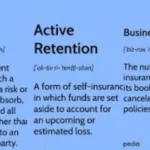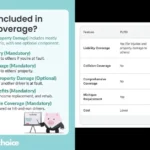Introduction to Saying Thank You in Japanese:
Knowing how to say thank you in Japanese is one of the most important phrases for anyone engaging with Japanese culture. Whether you’re traveling to Japan, making Japanese friends, or simply appreciating Japanese media, understanding how to properly say thank you in Japanese shows respect and cultural awareness. This comprehensive guide covers all the essential ways to express gratitude in Japanese, from casual to formal situations.
Basic Ways to Say Thank You in Japanese:
1. ありがとう (Arigatou) – Standard Thank You:
-
The most common way to say thank you in Japanese
-
Appropriate for casual situations with friends and peers
-
Example: Thanking a friend for a small favor
2. ありがとうございます (Arigatou gozaimasu) – Polite Thank You:
-
More formal version used in business and with superiors
-
Shows higher level of respect and politeness
-
Example: Thanking a colleague or service staff
3. どうも (Doumo) – Casual Thanks:
-
Very informal way to say thanks
-
Often used among close friends and family
-
Example: Quick thanks for minor help
Advanced Thank You Expressions in Japanese:
1. 本当にありがとう (Hontou ni arigatou) – “Thank you very much”:
-
Adds emphasis with “hontou ni” (really/truly)
-
Shows deeper appreciation in casual settings
2. 誠にありがとうございます (Makoto ni arigatou gozaimasu) – “Sincerely thank you”:
-
Extremely formal expression of gratitude
-
Used in business correspondence and formal speeches
3. サンキュー (Sankyuu) – Slang Thank You:
-
Japanese pronunciation of English “thank you”
-
Used playfully in text messages and casual conversations
Cultural Context: When to Use Each Thank You
| Situation | Recommended Phrase | Level of Formality |
|---|---|---|
| Business meeting | ありがとうございます | Very formal |
| Receiving gift from boss | 誠にありがとうございます | Extremely formal |
| Restaurant service | ありがとうございます | Polite |
| Friend buying coffee | ありがとう/どうも | Casual |
| Teacher’s help | ありがとうございます | Formal |
Pronunciation Guide for Thank You in Japanese:
Perfect your thank you in Japanese with these pronunciation tips:
-
ありがとう → “Ah-ree-gah-toh” (even stress on syllables)
-
ありがとうございます → “Ah-ree-gah-toh go-zai-mas” (softer ‘u’ sound)
-
どうも → “Doh-moh” (short and clipped)
Listen to native speakers to catch the subtle intonation differences between formal and casual versions.
Body Language When Saying Thank You in Japanese:
Japanese culture emphasizes respectful gestures:
-
Bow slightly when saying thank you in Japanese to elders/superiors
-
Deeper bows for more formal situations
-
Maintain appropriate eye contact
-
Use both hands when receiving gifts while thanking
-
Smile naturally with friends when using casual forms
Common Mistakes to Avoid:
-
Using ありがとう with superiors – Always use ありがとうございます in formal settings
-
Overusing どうも – Can sound too casual or even sarcastic in wrong contexts
-
Mispronouncing ございます – Practice the “go-zai-mas” rhythm
-
Forgetting to bow – The gesture completes the expression of thanks
Responding to Thank You in Japanese:
Complete your etiquette knowledge with these common responses:
-
どういたしまして (Dou itashimashite) – “You’re welcome” (standard)
-
いいえ (Iie) – “No problem” (casual)
-
とんでもないです (Tondemonai desu) – “Don’t mention it” (formal)
Special Thank You Situations:
1. Thank You for the Meal:
-
ごちそうさまでした (Gochisousama deshita) – After eating
-
ごちそうさま (Gochisousama) – Casual version
2. Thank You in Advance:
-
よろしくお願いします (Yoroshiku onegaishimasu)
-
Used when making requests
3. Thank You for Hard Work:
-
お疲れ様でした (Otsukaresama deshita)
-
Common workplace expression
Conclusion:
Properly saying thank you in Japanese opens doors to meaningful cultural exchanges. From the casual ありがとう to the extremely formal 誠にありがとうございます, each expression serves an important social function. Remember that in Japan, how you express gratitude often carries as much weight as the words themselves. Practice these phrases, understand their contexts, and you’ll navigate Japanese social situations with confidence and respect.
FAQs:
1. What’s the most common way to say thank you in Japanese?
ありがとう (Arigatou) for casual situations, ありがとうございます (Arigatou gozaimasu) for formal ones.
2. Can I use どうも with my boss?
No, どうも is too casual for superiors. Use ありがとうございます instead.
3. How do I say “thanks a lot” in Japanese?
本当にありがとう (Hontou ni arigatou) for friends, 誠にありがとうございます (Makoto ni arigatou gozaimasu) formally.
4. Is サンキュー proper Japanese?
It’s slang used playfully in casual settings but not in formal situations.
5. How should I bow when saying thank you?
A 15-degree bow is standard for everyday thanks, deeper for formal occasions.
6. What’s the difference between ありがとう and ありがとうございます?
ありがとうございます is the polite form used with superiors, strangers, and in formal contexts.
Master these expressions, and you’ll be ready to show perfect gratitude in any Japanese social situation!











